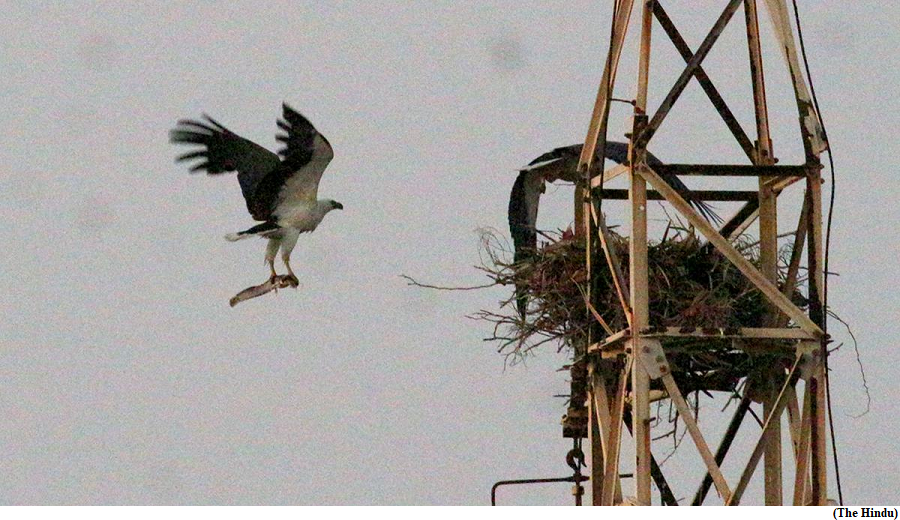Pipeline work leads to vast megalithic site in Kerala (GS Paper 1, Culture)

Why in news?
- A large number of megalithic hat stones were found from a single site during a recent salvage excavation conducted by the Kerala State Archaeology Department at Nagaparamba in Kuttippuram village, near Tirunavaya, in Malappuram district.
What are Hat stones?
- Hat stones, popularly called Thoppikkallu in Malayalam, are hemispherical laterite stones used as lids on burial urns during the megalithic period.
- Archaeologists say the discovery at Nagaparamba could arguably be the largest number of hat stones in an unprotected site in the State.
Recent excavation:
- A unique rock cut laterite burial chamber was found during the laying of water supply pipelines.
- A large number of megalithic burial sites and relics were found during the excavation.
- The team salvaged numerous earthen urns and iron implements with unique features, which could throw light on the life and culture of people who lived in those parts over 2,000 years ago.
Way Forward:
- A detailed survey will be conducted for the finds as well as the site.
Minister unveils lotus variety ‘Namoh 108’
(GS Paper 3, Science and Technology)
Why in news?
- Recently, the Union Minister of State for Science and Technology unveiled a lotus variety, ‘Namoh 108’, at a function in the CSIR-National Botanical Research Institute, Lucknow.

About Namoh 108:
- The lotus has 108 petals and was discovered several years ago in Manipur and kept at the institute as part of its collection of flowers and plants, on which the institute conducts research.
- Other than the possession of 108 petals, the flower on initial inspection was ordinary compared with several other kinds of lotus available in India.
- In fact, its “fibre quality” was less and it bloomed only in one season.
Genome sequencing:
- This is the only lotus variety in India to have had its genome sequenced.
- It was only after the number of petals was discovered that the NBRI cloned and worked on improving its germplasm and modifying its characteristics in a way that it could be cultivated relatively easily outside Manipur.
Lotus Mission:
- CSIR-NBRI would be initiating a ‘Lotus Mission’ as part of a larger ongoing horticultural mission to have more of the 108 Namo flowers grow in other parts of India.
WHO-managed grid to promote equitable access to digital health
(GS Paper 2, Health)
Why in news?
- Recently, the Health Minister launched the Global Initiative on Digital Health (GIDH), a network managed by the World Health Organization, in the presence of Tedros Adhanom Ghebreyesus, Director-General of the WHO.
- The GIDH is one of the key deliverables of India’s G-20 Presidency.

Key Highlights:
- It will consolidate the evidence and “amplify recent and past gains in global digital health” while strengthening mutual accountability to enhance the impact of future investments.
- The GIDH will be a WHO-managed network that will promote equitable access to digital health by addressing challenges such as duplication of efforts and “products-focused” digital health transformation.
Key components:
- The key components of the GIDH will leverage existing evidence, tools and learnings and will be co- created through a transparent and inclusive process.
- Through this evidence-based and comprehensive co-creation process, GIDH will ultimately aim to:
- ALIGN efforts to support the Global Strategy on Digital Health 2020–2025;
- SUPPORT quality assured technical assistance to develop and strengthen standards-based and interoperable systems aligned to global best practices, norms and standards;
- FACILITATE the deliberate use of quality assured digital transformation tools that enable governments to manage their digital health transformation journey.
Way Forward:
- The GIDH is an integrative step that fosters equity in healthcare by converging efforts and best practices.
Raptors make power towers their home
(GS Paper 3, Environment)
Why in news?
- White-bellied sea eagles in India are beginning to emulate their counterparts in Australia and Thailand by making their homes on power towers holding high-tension wires.
- The use of man-made structures as nesting sites can be both risky and beneficial to these coastal raptors and humans in the vicinity but the development points to a lack of trees and other natural nesting alternatives.

Nesting site:
- The nests of the white-bellied sea eagles were found on powerline towers about 2 km away from the sea in Ramanathapuram of Tamil Nadu.
- The nesting sites were strategic for the birds to conveniently scan the marine area for food.
About white-bellied sea eagle:
- The white-bellied sea eagle (Haliaeetus leucogaster) is a resident raptor belonging to the family Accipitridae.
- It has a wide distribution range on the sea coast of India from Mumbai to the eastern coast of Bangladesh, and Sri Lanka in southern Asia, through all coastal south-eastern Asia, southern China to Australia.
- The raptor, a diurnal monogamous bird of prey, is categorised as being of ‘least concern’ on the Red List of the International Union for Conservation of Nature.
- Feeding mainly on sea snakes and fish, the bird is occasionally seen in inland waters along tidal rivers and in freshwater lakes.
- It occupies the same localities for years and generally builds nests in tall trees near the seacoast, tidal creeks, and estuaries.
Nesting habit:
- Each nest, about 1.4 metres, was at a height of about 18 metres from the ground.
- The nests were large deep bowls constructed of thick sticks, twigs, and branches and lined with grass, seaweed, or green leaves.
Way Forward:
- Careful management and monitoring of such unnatural nesting sites are critical to the safety of both eagles and humans.





